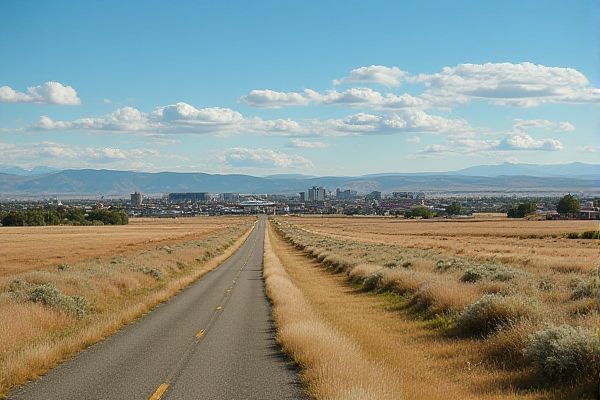
Safety and crime rates in Wyoming: Overall low crime rates. Higher property crime in urban areas. Violent crime uncommon statewide. Community-focused law enforcement. Lower crime in rural communities. Seasonal crime fluctuations possible. Wildlife-related safety awareness. Outdoor activity caution advised. Strong neighborly support systems. Regular safety updates recommended.
Overall low crime rates.
Wyoming is characterized by overall low crime rates, with statistics from 2008 to 2019 showing a general decline in both violent and property crimes. For example, in 2019, the state reported 1,258 violent crimes and 9,093 property crimes, reflecting a trend of decreasing crime rates over the years. Detailed insights into the factors contributing to this decline can be explored further on Crime in Wyoming on Wikipedia, where various aspects of the state's safety measures and initiatives have been documented.
Higher property crime in urban areas.
In Wyoming, higher property crime rates are observed in urban areas, with cities like Cheyenne, Riverton, and Torrington experiencing significantly higher property crime rates compared to the safer cities such as Pine Bluffs, Worland, and Glenrock. For more details, you can visit the Safest Cities in Wyoming page on SafeHome.org.
Violent crime uncommon statewide.
Violent crime in Wyoming is relatively uncommon, with an annual rate of 202 per 100,000 residents, which is 47 percent lower than the national average, placing Wyoming 46th nationwide for violent crime. The safest cities for violent crime include Thermopolis, Worland, and Newcastle, with significantly lower rates compared to the state's more dangerous cities like Riverton, Lusk, and Evanston. For more detailed insights on crime rates and statistics, you can explore the Safest Cities report on the SafeHome website.
Community-focused law enforcement.
The Wyoming Police Department employs a community-oriented policing model, focusing on crime prevention, community involvement, and strong police-community partnerships through initiatives like the Community Services Unit, School Resource Officers, Citizen Academy, and Neighborhood Watch groups to enhance public safety and reduce crime rates.
Lower crime in rural communities.
In Wyoming, several rural communities are noted for their lower crime rates, with cities like Kemmerer, Worland, and Wheatland standing out as being significantly below the national crime rate. These towns are recognized among the safest places to live in the state, offering a peaceful environment for their residents.
Seasonal crime fluctuations possible.
In Wyoming, as in many other regions, crime rates exhibit seasonal fluctuations. Generally, violent crimes increase during the summer months due to warmer temperatures and increased public activities, while property crimes also rise in the summer but can be more pronounced in areas with significant temperature changes, such as those seen in northern states. To gain a deeper understanding of these trends, the Seasonality of Crime blog provides comprehensive insights on how environmental factors impact criminal activities.
Wildlife-related safety awareness.
To ensure wildlife-related safety in Wyoming, maintaining safe distances from animals is crucial, with the recommended distance being 100 yards from grizzlies and 25 yards from other mammals like bison or elk. It is important to stay on designated trails, avoid feeding wildlife, and remain aware of signs of threatening behaviors, such as a bison raising its tail. Additionally, making noise while hiking, carrying bear spray, and storing food in bear-safe containers are essential precautions. For more comprehensive guidance, visit the Wyoming Wildlife Watching Safety Tips page for detailed information about safe wildlife experiences.
Outdoor activity caution advised.
When engaging in outdoor activities in Wyoming, it is important to be aware that while the state has generally lower crime rates, some cities like Riverton and Lusk have higher rates of violent crime, and cities like Cheyenne and Torrington have higher rates of property crime, which could impact safety in certain areas. For a comprehensive understanding of crime rates and safety across different cities in Wyoming, the resource on Safest Cities in Wyoming provides valuable insights and data.
Strong neighborly support systems.
In Wyoming, strong neighborly support systems are implied through the state's relatively low crime rates and the perception of safety, particularly in the northeast part of the state, which is considered the safest. The overall crime rate in Wyoming is about the same as the average US state, with a rate of 42.90 per 1,000 residents, and community engagement is a factor in maintaining these safer areas. For a more comprehensive understanding of Safest Places In Wyoming, one can explore various resources. The commitment of communities to work together plays a pivotal role in sustaining the sense of security throughout the region.
Regular safety updates recommended.
Wyoming, despite being one of the safer states with low violent and property crime rates, still requires residents, especially those in more populated cities like Cheyenne, Riverton, Lusk, and Torrington, to stay vigilant and consider home security measures to prevent and protect against crimes. For more insights on safety, checking out the Safest Cities in Wyoming could provide valuable information and tips for residents aiming to enhance their home security and overall safety.
